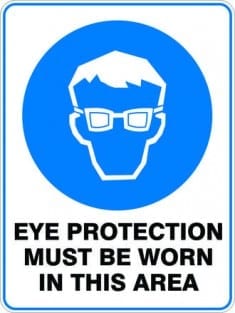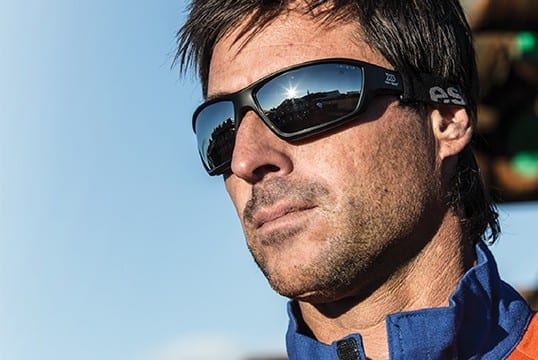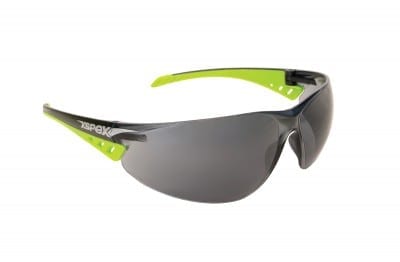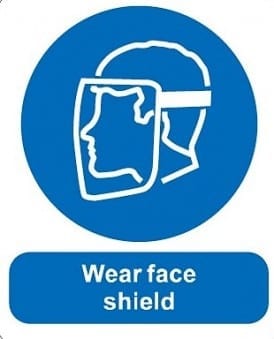Safe Sight: Protecting Your Eyes in a Hazardous Workplace
These days most workplaces are (quite rightly) not overly hazardous. In this modern work environment, the risk of eye injury is likely to be considered minimal and having to wear safety glasses unnecessary.
But it’s worth reminding ourselves—and our employees—just how easily the human eye can be damaged, and by a variety of hazards: splinters, chips, dust, protruding objects, pressurized fluids, chemical splashes, vapours, gases and UV light.
Workplace eye injuries are in fact very common.

A US Bureau of Labor Statistics survey showed that nearly 60% of workers who suffered an eye injury at work were not wearing any eye protection when the accident occurred, and the workers usually reported that they didn’t think protection was required in the situation. In 2015 the large number of 12,000 New Zealanders filed a claim with ACC for an eye injury suffered at work.
Over 90% of these workplace eye injuries were due to four main causes:
- Being struck in the eye by flying particles and objects such as nuts, bolts, ball bearings, springs, and fragments from abrasive blasting and grinding.
- Striking the eye against an object, for instance by blundering into a protruding piece of equipment.
- Eye contact with:
- Splashes of molten metals, hot liquids, corrosive chemicals, irritant liquids, infectious agents.
- Fumes—corrosive, irritant.
- Dusts—organic, chemical, abrasive, corrosive.
- Exposure to radiation from welding flash, ultraviolet or infrared radiation, very hot substances, laser beams, laser reflection or fibre optics.


WHEN SHOULD I WEAR SAFETY EYEWEAR?
Eye dangers are in every workplace, but some jobs are riskier than others. Especially at risk are manufacturing workers and tradesmen—assemblers, builders, concrete workers, plumbers, mechanics, tool or equipment operators for example.
Whether or not you think eye injuries are likely in your workplace you still need make an educated assessment of the hazards. Being aware of your surroundings is an important part of staying safe.
Look at your work environment and analyse it from a ‘what if—worst case scenario’ point of view. Is there any risk from:
- Flying particles? (including dust and splinters, chips or shavings)
- Protruding items? (particularly common in workshops and construction sites)
- Chemicals? (splashes and fumes)
- Fluids? (molten metal, pressurized
- Compressed air?
- Radiation? (intense visible light including sunlight and arc welding, UV light, heat/infrared radiation, lasers)
- Pathogens? (splashes/contact with potentially infectious body fluids or biohazards)
If any of these hazards are present, you need to think seriously about making safety eyewear compulsory in that area of the workplace.


WHAT TYPE OF EYE PROTECTION IS BEST FOR ME?
Again, to choose the best type of safety eye protection, begin by assessing the hazards in your workplace. A guide to the recommended safety eyewear for different situations:
| Work environment hazard | Recommended eyewear. |
| Flying or protruding objects | Safety glasses with rated impact protection. |
| Airborne particles, chips or dust | Safety glasses with sideshields or wraparound lenses. In very dusty environments, use safety glasses with a sealing gasket or goggles. |
| Grinding chips and grit, fluid splashes | Faceshields are often used to protect the eyes and face from impact hazard such as flying objects and road debris, chemical splashes, molten metals or potentially infectious fluids in medical situations. The most complete eye protection is given when faceshields are used in combination with safety glasses or goggles. |
| Chemicals or fluid splashes | Goggles. |
| Sunlight glare | Safety glasses with tinted, reflective or polarized lenses. Learn more about lens colour on our resource page. |
| UV solar radiation | Esko’s safety lenses offer at least 99.9% UV protection. Esko’s Magnum and Destination ranges provide 100% UV protection. |
| Proximity to arc welding or very bright light | Shade 5 lenses. (Note these lenses are intended for protection in proximity to arc welding, not for the actual welder.) |
| Lasers or fiber optic radiation | Requires specialised safety glasses, faceshields, helmets or goggles designed for that task. |


I WEAR PRESCRIPTION GLASSES, DO THESE GIVE ME ENOUGH PROTECTION?
Safety glasses are designed to provide significantly more eye protection than normal prescription lenses. Safety glasses in New Zealand must meet Australia/New Zealand standard AS/NZS 1337.1:2010: Personal Eye Protection. Both lenses and frames will be stronger than regular eyeglasses. Your optician will be able to supply prescription safety glasses that are certified to the standard. Alternatively, Esko’s Vispec glasses and Esko goggles meet the standard and are designed to be worn over prescription glasses.
AND UV LIGHT?
An often-overlooked hazard is UV radiation from the sun. Fortunately, Kiwis are becoming more mindful of the danger, and will be generally aware that New Zealand’s rates of UV radiation (and skin cancer) are the highest in the world. Especially in New Zealand, ultraviolet awareness is important to long-term eye health.
The safety lenses in Esko eyewear provide at least 99.9% protection from harmful UVA and UVB rays. Esko’s Magnum and Destination ranges provide 100% UV protection (this means UV transmission is cut off to zero at the upper 400mn wavelength limit of UVA).
This blocking feature applies to both clear and tinted lenses. It significantly helps to avoid eye conditions caused by long-term exposure to the sun, which can include macular degeneration, cataracts and benign eye growths.
ESKO EYE PROTECTION
Esko offers a complete range of safety eyewear designed for New Zealand trades, industry and farms. All our safety glasses are AS/NZS 1337.1:2010 certified and have anti-fog and anti-scratch features. For the convenience of people who wear prescription glasses, some of our glasses are designed to fit over them. Safety glasses from Esko not only protect your eyes but are designed to be comfortable and fashionable without compromising safety.
To enquire about our safety glasses just call 0800 500 470 or use the website contact form.